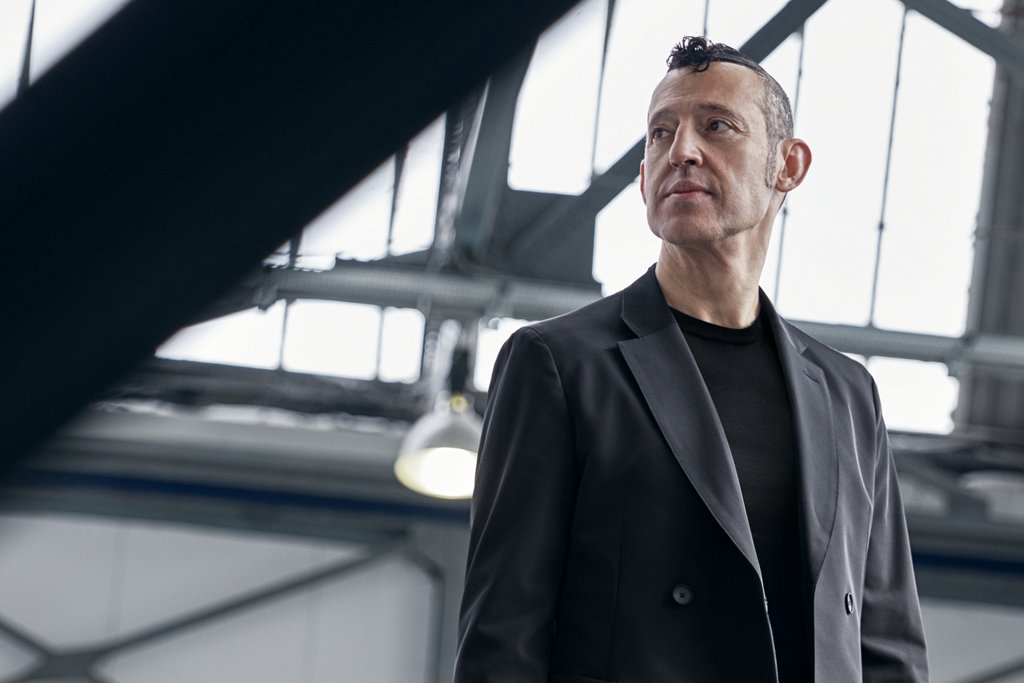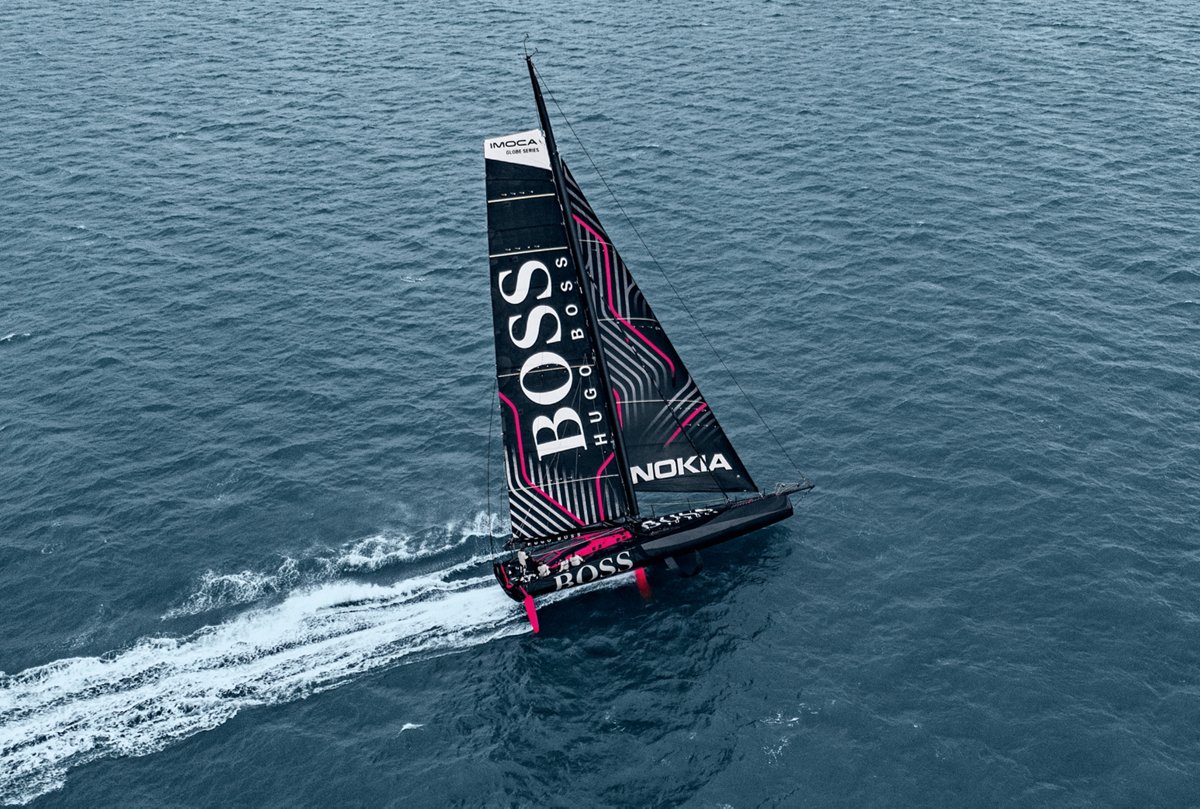

BOSS talks to the industrial designer Karim Rashid, who devised the brand identity for the new ‘HUGO BOSS’ yacht, about receiving recognition, the importance of design and why teaching the next generation is top of his to-do list


-
When did you realize that you wanted a career in design?
I realised my life's mission at the age of five in London. I went sketching with my father drawing churches on Sundays. He taught me to see, he taught me perspective, he taught me that I could design anything and touch all aspects of our physical landscape. I remember drawing a cathedral facade and deciding I did not like the shape of the gothic windows (the pointed tops seemed dangerous) so I redesigned them. I drew them as ovals. I also remember winning a drawing competition for children on the Queen Elizabeth when it sailed from London to Montreal in 1966. I drew a piece of luggage since I was perplexed at how we had managed to pack all of our belongings into just a few suitcases to go to the other side of the world. When applying to university at the age of 16, I was torn between architecture, fine art, and fashion. I originally applied to study architecture at Carleton, which was much too late, and the program was full. They told me they could accept me in the 'architectural stream' of Industrial Design. So I went to Carleton University expecting to study architecture, but the second I started my industrial design course I knew that was what I wanted to do.
-
Were you always creative, even as a child?
Absolutely! My father encouraged me to explore the arts and be a pluralist! He was a creative renaissance man – I saw him create furniture, make dresses for my mother, paint canvases, design sets for television and film, etc. We were brought up in an extremely inspiring environment that gave me a great respect for all arts including costume design. There were pens, markers, coloured pencils and paper everywhere, so drawing and creating were a natural process. He took us to his design office where he designed film and television sets and we would spend the weekend making models, drawing, playing in the costume department and on the TV sets. I do the same with my daughter. I am constantly teaching her how to draw, and I have taught her what death is, and that ghosts, monsters, witches don’t exist, and that Santa Claus does not exist, and that all these tales of princes and princesses are very old. I’ve taught her that a woman today must aspire to contribute to the world, and not to expect happiness from a ‘prince’. She is very intelligent and curious. It’s fascinating to see life through her eyes. I learn so much from her. We’re trying to introduce her to so many beautiful, inspiring things as my father did for me. I love sharing my joy of drawing and design with her. My wife, daughter and I visit museums, galleries and architectural landmarks around the world.
-
Do you remember how it felt to receive recognition for your work for the first time?
In 1993, I found myself in New York City penniless and started drawing objects - romanticizing about the beautiful world I always wanted to shape. When I started my own office, after approaching about 100 companies from Lazy Boy to Gillette, I only got one client. I designed a collection of tabletop objects for Nambe in Santa Fe that became very successful. They sold about $1,000,000 in the first year so that gave me about $30,000 to live on and the designs went into four permanent collections. This relationship gave me the confidence that I could create some meaningful objects that had a place in the world.
-
What does success mean to you?
I have worked in over 40 countries, created over 400 designs and received over 400 awards, in the last 25 years since I moved to NYC. This is one marker of success, but I feel the real accolade is seeing my objects in people’s homes or to see a space realized, enjoyed and experienced by people. Design is for people, not for museums. My personal highlight is to see that over one million people on Facebook like me, because I always saw design as a populist act, not an elitist act.
-
What’s been the biggest challenge of your career to date?
The big challenge of design is to create something that, although accessible to all consumers, touches people’s lives, gives them some sense of elevated experience and pleasure, and is original. Designers have the power to shape a better, smarter world, to simplify yet inspire every individual, and to make well-made and beautiful products accessible to all.
-
Your designs span so many forms; fashion, interior, furniture, the list goes on… Does your creative approach differ depending on what you’re working on?
My diversity affords me the ability to cross-pollinate ideas, materials, behaviours, aesthetics and language from one typology to the other. I prefer my thoughts to come out fluidly, intuitively and in the moment, wherever the concept or dream occurs to me. But at the same time what we call intuition is based on accumulative experiences, and years of projects, and all the books I have read, all the travel, all the diverse factories I have observed and all the different projects I have worked on.
-
You spend a lot of your time lecturing at various universities and conferences around the world. Alongside your art, is teaching something that you are also passionate about?
I am very passionate about lecturing and speaking about how design is extremely consequential to our daily lives and can positively change human behaviour. I preach about how design shapes our culture and our future. I am interested in showing the world how a contemporary physical world can be warm, soft, human, and pleasurable. Just as music, art, food and literature are public subjects to be discussed and consumed, so is design. It is in the public’s interest to understand how good design can shift and change human behaviour and create new social conditions just as the other arts do. In fact, I was fired while teaching Industrial Design at Rhode Island School of Design (RISD) because my course was more ‘philosophy and theory’, not design. But I always believed design needs thinkers and not just doers. Since then I’ve ended up teaching for 12 years full-time alongside my practice and I speak at about 25 lectures and workshops a year globally.
-
Why is design so important?
Design is not about a form or shape – it’s is a cultural critique, a cultural shaper, a faction of social, political and economic life. The more in tune we are with the commercial world, the more relevant our work is. Design is about creating the physical utopia of our everyday life.
-
You’re an extremely busy man, how do you make time for everything? Have you had to sacrifice anything to be where you are today?
I waited many years to have children. Now I have my six-year-old daughter, I wish I had had a child many years ago. That’s all.
-
What’s the best piece of advice you’ve ever been given?
As an undergraduate studying in Italy, Ettore Sottsass taught me not to be too much of an artist in order to be a great designer. I keep his vases and a few Memphis works around to remind me of this. An artist is not a designer, and a designer is not an artist. Working with Rodolfo Bonetto in Milan taught me that the industrial object is a manifestation of behaviour. Watching lectures in Canada in the late ‘70s of Buckminster Fuller, Charles Eames and George Nelson taught me to not conform readily and to understand industry fully. Studying with Marshall McLuhan taught me theory and to see the world from a different perspective. And reading Jean Baudrillard, Hegel, Virilio and Foucault taught me that design is a social and political act. What counts in the end is to help the world become a better place from aesthetics to human behaviour, from ecology to economy. Hence, design is a creative act, a social act, a political act, and an economic act.
